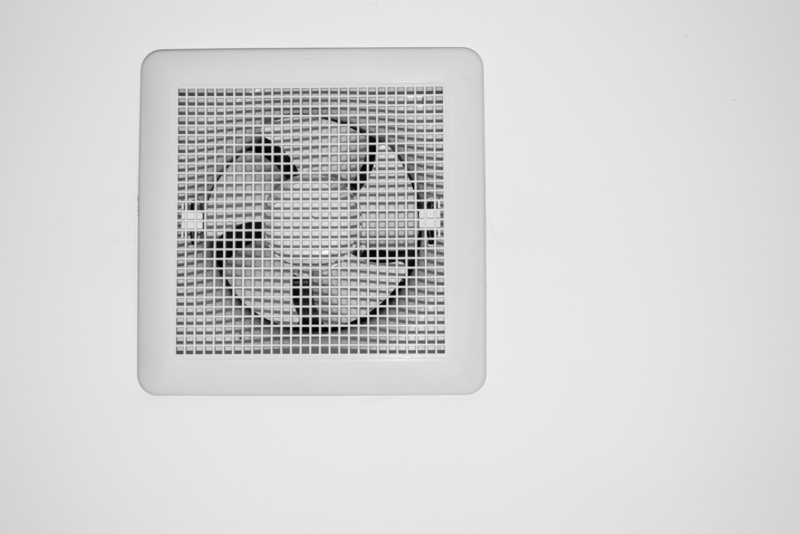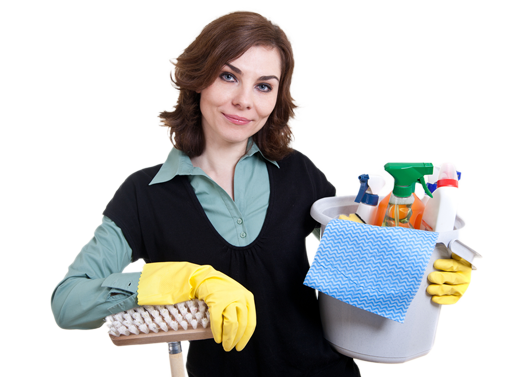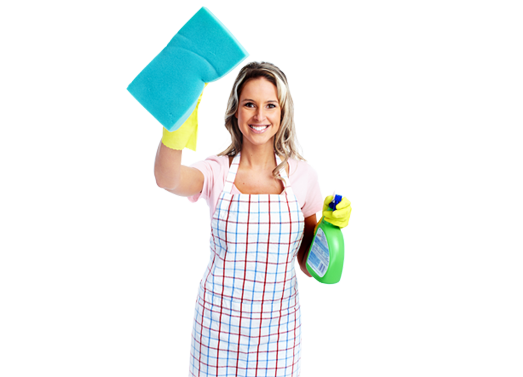Elevate Your Cleaning Game with Proven Methods for Burnt Stovetop Care
Posted on 25/06/2025
Elevate Your Cleaning Game with Proven Methods for Burnt Stovetop Care
Is your kitchen stovetop plagued with stubborn, burnt-on stains and unsightly residue? You've come to the right place. Whether you're a home chef or someone who just wants a spotless kitchen, mastering burnt stovetop care elevates both the hygiene and appearance of your cooking space. In this comprehensive guide, we'll reveal the most effective, science-backed solutions to restore your stovetop's sparkle. Not only will you learn how to remove tough burns, you'll also discover smart prevention tips and insider cleaning hacks to maintain a pristine surface every day.
Why Burnt Stovetop Care Matters
Every home chef knows that spills and splatters are inevitable. Left unattended, they bake onto the stovetop, resulting in stubborn burnt residue that's hard to eliminate. Prolonged neglect doesn't just ruin aesthetics - it can also:
- Lead to unpleasant cooking odors
- Cause uneven heating or fires
- Attract bacteria and pests
- Decrease the lifespan of your stovetop
- Make cleaning even more difficult over time
Proper burnt stovetop maintenance is key to ensuring kitchen safety, hygiene, and the longevity of your appliances.

Understanding Your Stovetop: Types and Their Cleaning Needs
Before diving into cleaning methods, it's essential to know your stovetop type. Distinguishing between gas, electric, and glass/ceramic stoves helps you choose the right cleaning approach and products for burnt stovetop care.
Gas Stovetops
- Feature removable grates and burner covers
- Burnt-on food often accumulates around burners and grates
Electric Coil Stovetops
- Contain metal coils that can be removed for deeper cleaning
- Spills often drip onto the drip pans beneath the coils, burning onto the surface
Glass or Ceramic Stovetops
- Sleek appearance, but delicate and prone to scratches from abrasive cleaners
- Burnt stains tend to create visible, stubborn marks
Knowing your stove type ensures you utilize the most effective and stovetop-friendly cleaning techniques for burnt spills and stains.
Essential Tools & Supplies For Burnt Stovetop Cleaning Excellence
Ready to elevate your cleaning game? Before you start scrubbing, gather these essential items:
- Baking soda and white vinegar - Natural, chemical-free stain fighters
- Dish soap - Cuts through grease, especially when combined with hot water
- Non-abrasive sponges and microfiber cloths - Protects your stovetop surface from scratches
- Plastic or silicone scrapers - Perfect for removing stuck-on gunk without damage
- Commercial stovetop cleaners - Specialized formulas for tough, burnt stains
- Razor blade scraper (for glass/ceramic tops ONLY) - Use with caution for razor-thin burnt residue
Pro tip: Never use steel wool or harsh abrasives on glass or ceramic stovetops! These can leave permanent marks and destroy that glossy finish.
Step-By-Step Guide: Easy, Effective Burnt Stovetop Care
Consistency is the secret to maintaining a beautiful, functional stovetop. Follow these step-by-step burnt stovetop cleaning methods for every type of stove.
1. Initial Prep: Safety First
- Turn off the stove and allow the surface to cool completely.
- Remove grates, burners, or electric coils for a thorough clean.
- Wipe away loose debris with a damp microfiber cloth.
2. Soften Up Burns with Soaking
- Gas or Electric Coil Stovetops: Submerge grates, burner covers, and drip pans in hot, soapy water for 15-20 minutes. This loosens burnt residue and grease.
- Glass/Ceramic Stovetops: Lay a hot, damp towel on burnt spots for 10-15 minutes to soften caked-on residue.
3. Use Baking Soda and Vinegar to Dissolve Burnt Stains
- Generously sprinkle baking soda on burnt areas.
- Spray or gently pour white vinegar over the baking soda. Let it fizz and sit for 10 minutes.
- The chemical reaction helps lift stubborn, burnt spots.
- Gently scrub the area with a non-abrasive sponge or cloth.
4. Dish Soap and Hot Water Attack
- Mix a few drops of dish soap with hot water.
- Dip your sponge or microfiber cloth and wipe down the surface, focusing on burnt residue.
- For grates or rings, use a scrub brush to tackle tough stains after soaking.
5. Razor Blade Scraper (Glass/Ceramic Only)
- Reapply the baking soda and vinegar paste to any remaining burnt spots.
- Hold the razor blade at a shallow angle (30-45?) and gently scrape burnt areas.
- Wipe away loosened debris with a damp cloth.
Be extremely careful not to gouge or scratch the glass! Use short strokes and keep the surface wet.
6. Commercial Cleaner Application
- Stubborn stains refusing to budge? Use a stovetop-specific cleaner (Cerama Bryte, Bar Keepers Friend, etc.).
- Follow label instructions and always rinse thoroughly after use.
7. Final Polish and Reassembly
- Buff with a clean, dry microfiber cloth for a streak-free finish.
- Reassemble grates, coils, or burner covers after they're completely dry.
You've now transformed your kitchen with proven burnt stovetop revitalization methods!
Specialty Solutions: Natural vs. Chemical Cleaners
Choosing between natural and commercial products can impact both effectiveness and environmental health. Let's break it down:
Natural Burnt Stovetop Cleaners
- Baking Soda: Mildly abrasive and absorbs odors--ideal for most surfaces.
- White Vinegar: Cuts through grease and limescale, boosts stain removal.
- Lemon Juice: Contains citric acid, natural degreaser with a fresh scent.
Usage Tip: Combine baking soda and lemon juice into a cleaning paste for mild, chemical-free cleaning power.
Chemical Burnt Stovetop Cleaners
- Designed for burnt-on food and heavy-duty spills
- Often work faster, especially on extreme stains or heavy carbonization
- Always read labels and ventilate your kitchen
Pro Tip: Test any chemical cleaner on a small, inconspicuous area to avoid discoloration or damage.
Prevention: Keeping Your Stovetop Burn-Free
The best way to avoid burnt-on messes is simple: Address spills as soon as they happen. But in the real world, distractions happen. Here's how to stay ahead with smart burnt stovetop prevention strategies:
- Wipe up spills daily. Even water drops can leave mineral stains if left unattended.
- Use burner liners for gas or electric stoves. These reusable mats catch drips, making cleanup easier.
- Always use the right cookware size. Oversized pans can cause spills to flow over the burning elements.
- Periodically deep-clean your burners and drip pans.
- Never leave boiling pans unattended. Overflow is a major culprit for stovetop burns.
Your consistent effort in prevention reduces the frequency and effort needed for deep cleaning!
Common Mistakes to Avoid for Burnt Stovetop Care
Even the most diligent home cleaner can make errors when dealing with burnt stovetops. Avoid these all-too-common pitfalls to ensure long-lasting cleanliness and stovetop health:
- Skipping surface cooling: Cleaning a hot stove can result in steam burns or cracked glass--always let the surface cool!
- Using abrasive pads or wire brushes: These can scratch your stovetop, making future stains even harder to remove.
- Applying excessive force: Let your cleaners do most of the work--hard scrubbing risks damage.
- Mixing chemicals: Some combinations (like bleach and ammonia) produce toxic fumes. Stick to one cleaner at a time!
- Ignoring manufacturer instructions: Each stovetop model may have specific cleaning guidelines. Always check your appliance manual before starting.

FAQs: Elevate Your Burnt Stovetop Cleaning Know-How
1. Can I use vinegar and baking soda on all stovetops?
Yes, but for glass or ceramic stoves, use a gentle hand to avoid scratching. For sealed gas or electric stoves, the combination is safe and effective for most burnt-on stains.
2. How often should I deep-clean my stovetop to avoid burnt build-up?
Aim to deep-clean biweekly or at least once a month, depending on cooking frequency.
3. What if I have old, stubborn burnt stains that won't come off?
If several cleaning sessions don't work, use a commercial degreaser or contact professional appliance cleaners for severe carbonization.
4. Can I use a dishwasher for grates, burner covers, or drip pans?
Most metal (not enamel-coated) grates and covers are dishwasher safe. However, check your stove's manual first to avoid potential warping or finish damage.
5. Are stovetop cleaners safe for pets or kids?
Natural cleaners like baking soda, vinegar, and lemon are safe in small amounts. Always keep chemical cleaners out of reach and thoroughly rinse surfaces after use.
Upgrade Your Burnt Stovetop Care Routine: Final Thoughts
With these proven burnt stovetop cleaning methods in your arsenal, there's no spill or stain you can't conquer. Remember, the key to a dazzling stovetop is a blend of regular maintenance, prompt spill management, and proper tool selection. Armed with these strategies, you'll not only elevate your cleaning game but keep your kitchen sanitary and inviting, meal after meal.
Say goodbye to burnt-on headaches. Invest a little time now, and enjoy a beautiful, functional kitchen for years to come!
```



